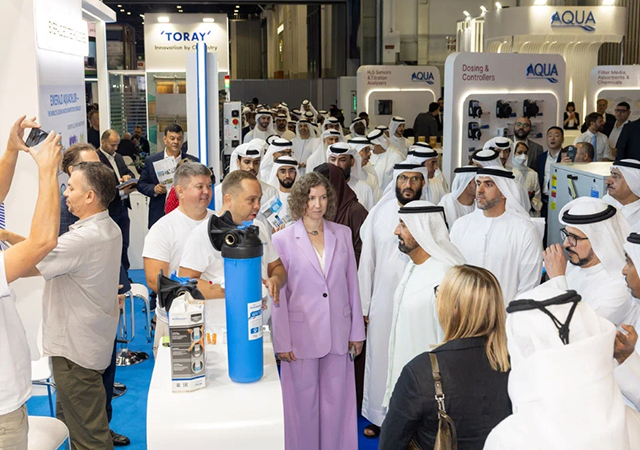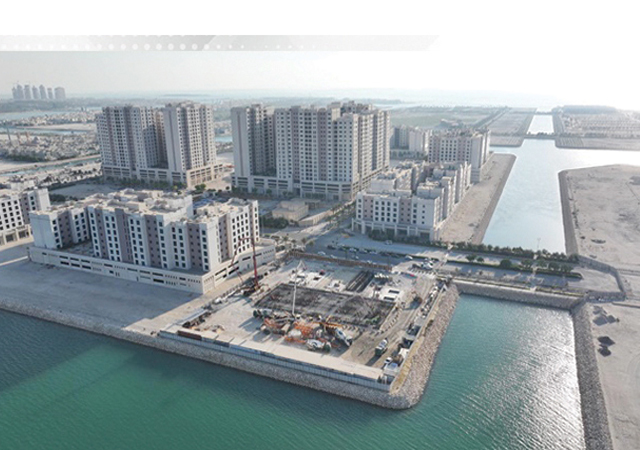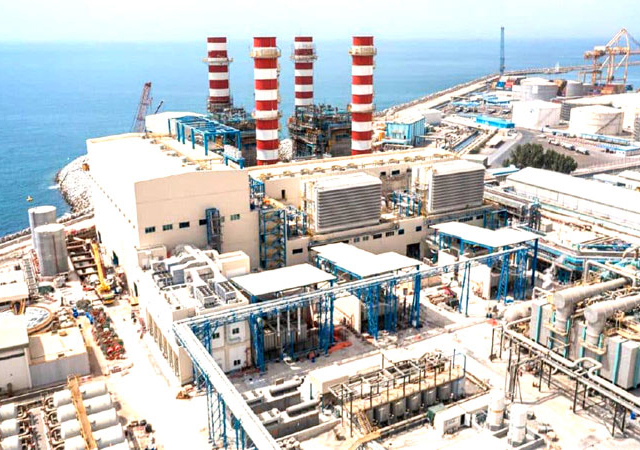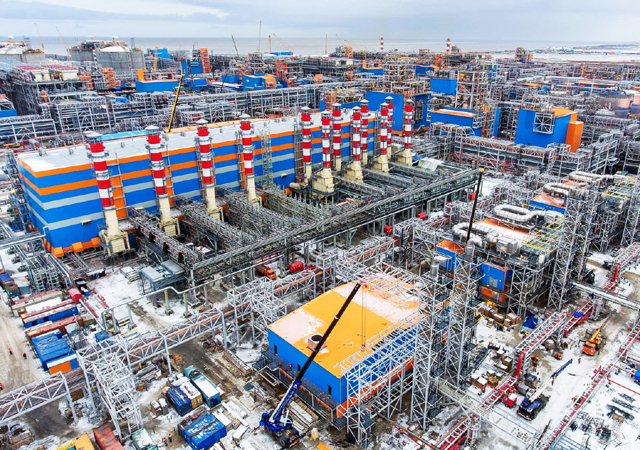Interlocking concrete pavers (ICPs) are composed of Portland cement, sand and a mixture of both fine and coarse aggregates. Pigments are frequently added to provide colour while admixtures are typically added to improve performance and reduce efflorescence.
Under factory-controlled conditions, these materials are combined with a small amount of water to make a "zero slump" concrete. This mixture is then moulded (into a number of different shapes and sizes) using specialised machines that apply pressure and vibration. The result is a consistent, dense, high-strength concrete segmental paving unit that can be used in virtually any heavy-duty hard surfacing application including ports, airports, factory floors, roads, streets, and parking lots.
ICPs have been used with noteworthy success for almost 30 years in many British and European and also Middle East ports like Salalah in Oman, Aden in Yemen and, most recently, Jeddah in Saudi Arabia. Examples include the European Container Terminal in Rotterdam, the Netherlands, and the Port of Felixstowe, England, with over 2 million sq m and 186,000 sq m installed respectively.
Pavers were selected for these demanding applications as a result of their proven durability and resistance to static indentation from the metal corner castings on shipping containers - which can exert a weight of up to 151 kN on each 150 mm by 200 mm metal corner when stacked. Unlike asphalt, concrete pavers do not indent from these loads. In addition to their resistance to highly concentrated loads, pavers are ideal for ports because they resist hydraulic oil that occasionally leaks onto the pavement from container handling equipment.
In North America, for instance, ICPs have been chosen for numerous port pavement projects:
Port of Oakland, California: In one of the largest port pavement installations in the Pacific states, the port of Oakland, California, has placed more than 300,000 sq m of ICPs in a project funded by the Transpacific Container Corporation, a large global shipping company. The pavement was designed by an international team of engineers with the design life expectancy of 20 years. The pavement, when trafficked by gantry cranes and lift trucks, is subject to loads of more than 40,000 kg. The pavements, which were installed using mechanised equipment, were installed over bedding sand which was laboratory-tested to ensure consistency.
The owner of the port wanted a durable, low-maintenance pavement at a competitive price. While monolithic bituminous pavements are less expensive initially, maintenance is high, especially from static indentations from shipping containers. Interlocking concrete pavers, however, will not deteriorate under such loads.
Port of Tampa/Port of New Orleans: The ports of New Orleans, Louisiana, and Tampa, Florida, have also installed ICPs in major upgrades to their facilities. The uniqueness of New Orleans and Tampa projects is their scale, which involved paving several hectares of port property. The Port of New Orleans needed to expand container storage and marshalling yards adjacent to the Mississippi River. The paving was part of a $215 million capital improvement programme to upgrade the port's facilities.
Design requirements
Port pavements are typically designed to avoid structural or surface failure that can lead to decreased operational efficiency and loss of revenue. As a result, engineers consider structural and drainage design carefully. In addition, details regarding underground services, stormwater management and environmental factors are addressed.
Life-cycle cost analysis, which determines the most cost-effective pavement, forms an important component of most projects. This analysis compares initial costs, maintenance expenses, rehabilitation costs and other factors of different pavements so that the most cost-effective pavement choice can be made.
The first area in New Orleans to be paved was a 3.2-hectare facility known as the Nashville Avenue Terminal Marshaling Yard B on the Mississippi River. A cross-section was developed for interlocking concrete pavement using 300 mm of cement-stabilised base over compacted river sand. The base consisted of a waste product known as plaster of Paris (CaSO4 + 1/2 H20) from a local chemical plant.
The pavements at New Orleans are designed to take 444 kN wheel loads from equipment for lifting and moving shipping containers. The machines exert additional forces from turning, accelerating and braking. In addition, containers are occasionally dropped on the pavement. Interlocking concrete pavers can take these loads because of their high compressive strength (minimum 8,000 psi/55 Mpa).
Life-cycle costs
Before venturing with their first interlocking concrete pavement project, the Port of New Orleans staff conducted a life-cycle cost study of four different pavement systems. They projected that concrete pavers would have the lowest maintenance over 40 years. Various price and discount rate scenarios were conducted, demonstrating that the pavers would have a lower life-cycle cost than PCC (precast concrete) pavements, and break even with asphalt at 15-20 years. In the light of the results of their analyses, concrete pavers on a cement-treated base were selected.
The pavements at the Nashville Avenue facility were installed with mechanical equipment from Optimas in Germany (www.Optimas.net). To screed the bedding sand, powered screeds were used. A Bobcat or similar equipment pulls these adjustable "ploughs" or screed buckets.
Port of Baltimore: The Port of Baltimore, Maryland, recently completed Berth 4, a 60,000 sq m area for container storage, the second at the port with interlocking concrete pavement. The first area (Berths 1-3) was built in 1989 at the newly-constructed Seagirt Marine Terminal. It consisted of a 21,000 sq m wharf area of pavers underneath several container-handling cranes.
Freeport: The Freeport Harbour Company is investing more than $78 million in the development of a container handling facility on Grand Bahama Island. The facility includes 111,000 sq m of concrete pavers, making it one of the largest ICP port installations in North America. This pavement installation is the centerpiece of development of a major container transshipment hub in Freeport. Plans include redevelopment of cruise ship passenger handling facilities and a ship repair operation, plus various marine and industrial projects.
Pavers were selected for their resistance to static indentation from the metal corner castings on shipping containers. Loaded containers can be stacked two high. This can exert a weight of up to 151 kN on each 150 mm by 200 mm metal corner. Unlike asphalt, concrete pavers do not indent from these loads. Furthermore, they will be subject to straddle carriers having 124 kN wheel loads.
Pavement of choice
A combination of factors is creating an evolution in the approach to port pavements. Perhaps most importantly, ICPs have demonstrated lower life-cycle and maintenance costs over their predicted service life (40 years). This fact, combined with their proven ability to support highly concentrated loads, resistance to elements and the ability to endure differential settlement without cracking, have made ICPs the pavement of choice in port applications.








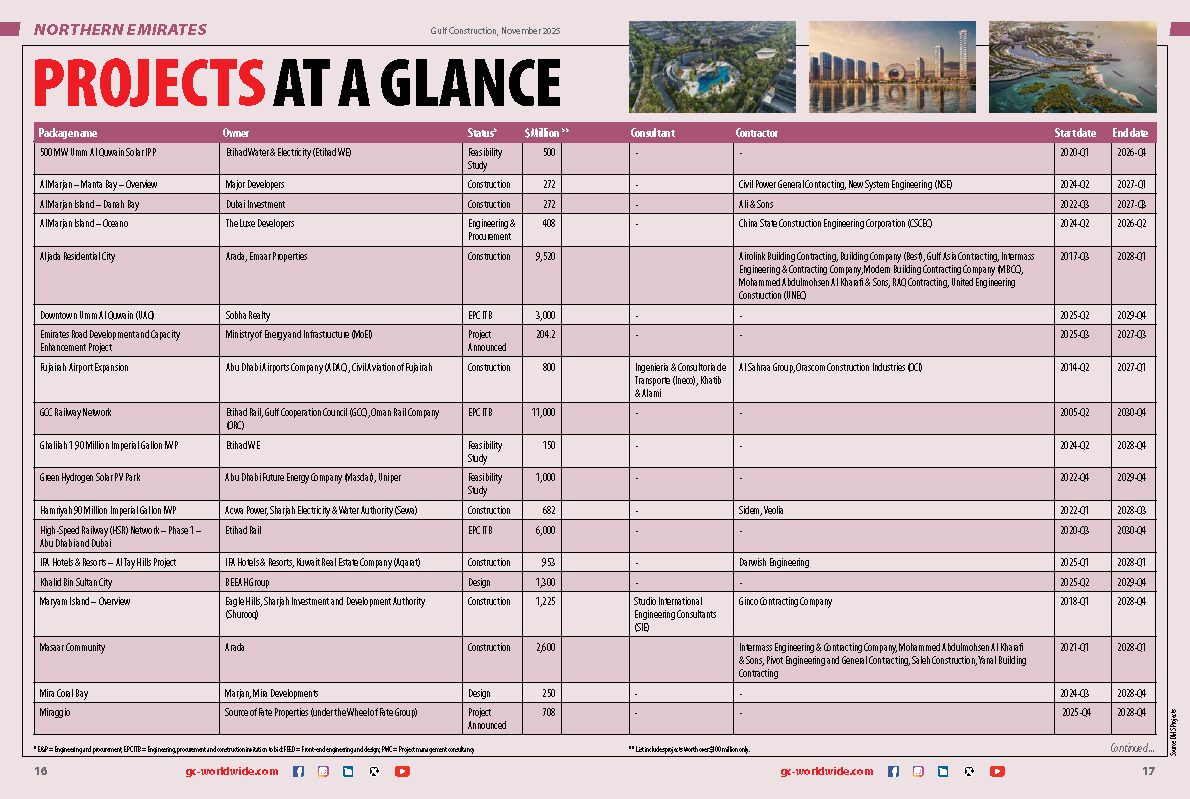




(5).jpg)








.jpg)





